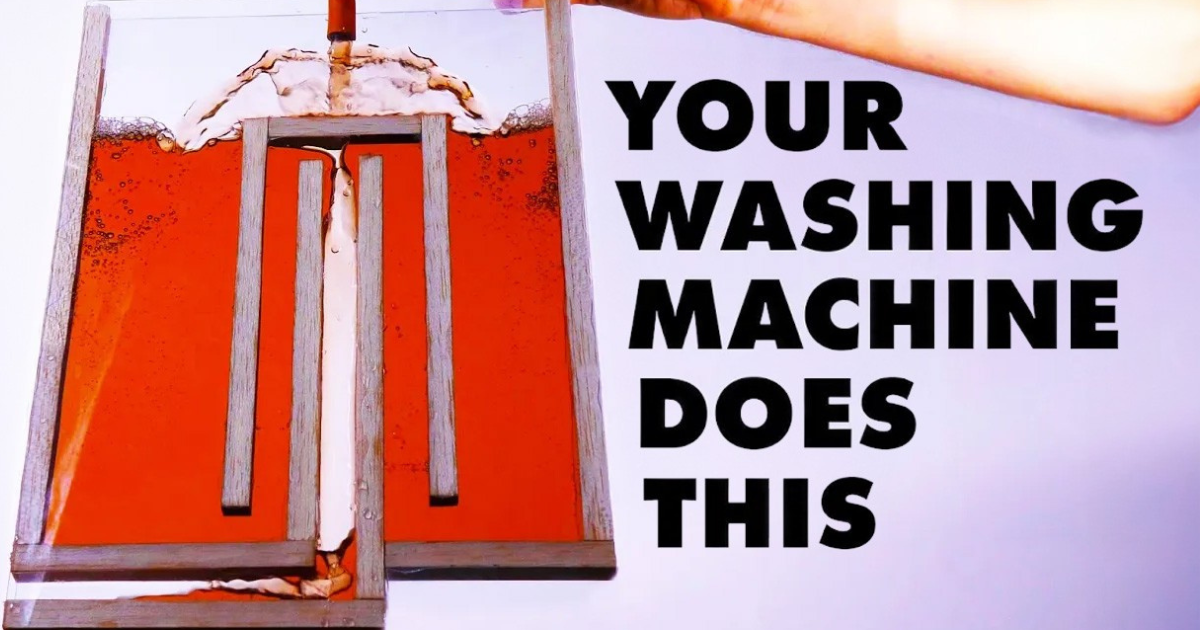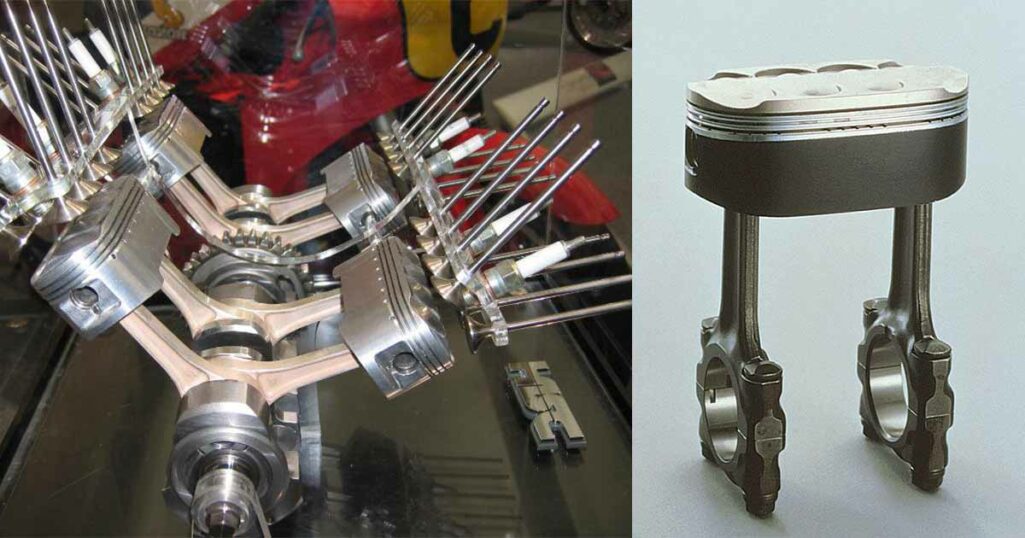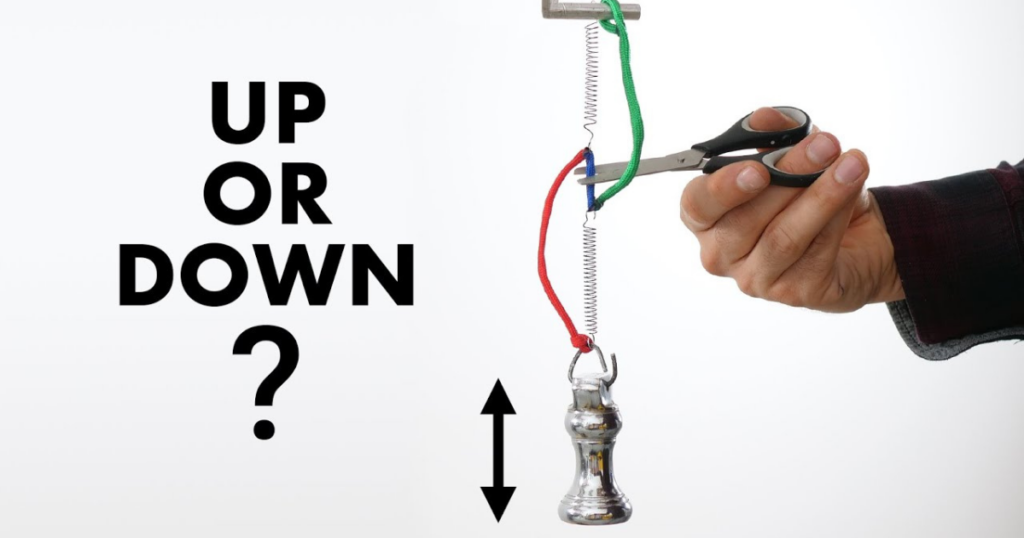
Imagine this: you have two rubber bands tied together holding a weight. You cut one band, expecting the weight to drop. But, to your surprise, it goes up! Sounds crazy, right? This mind-bending experiment explores the fascinating world of physics, using springs, ropes, and even traffic jams to shed light on the unexpected.
The Upward Surprise: Springs in Disguise
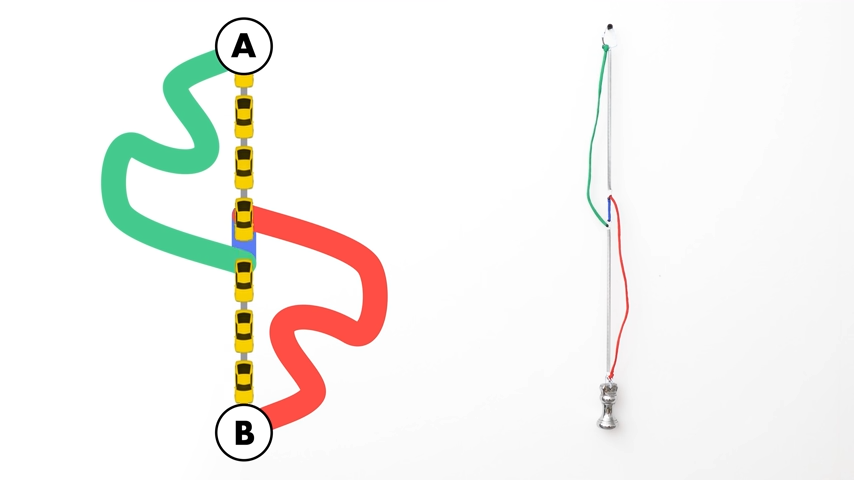
Let’s break down the initial setup. We have two springs connected by a rope, holding a weight. But here’s the trick: the top two ropes (red and green) are slack, not carrying any weight. So, it’s like having one long spring (blue and green combined) holding the weight.
Now, when you cut the blue rope, what happens? You essentially switch from one long spring to two shorter ones (blue and green separate). Just like stretching a single spring makes it longer, two springs stretch more than one! This explains the weight’s unexpected upward movement.
The Slow and Steady Reveal: Unveiling the Transition
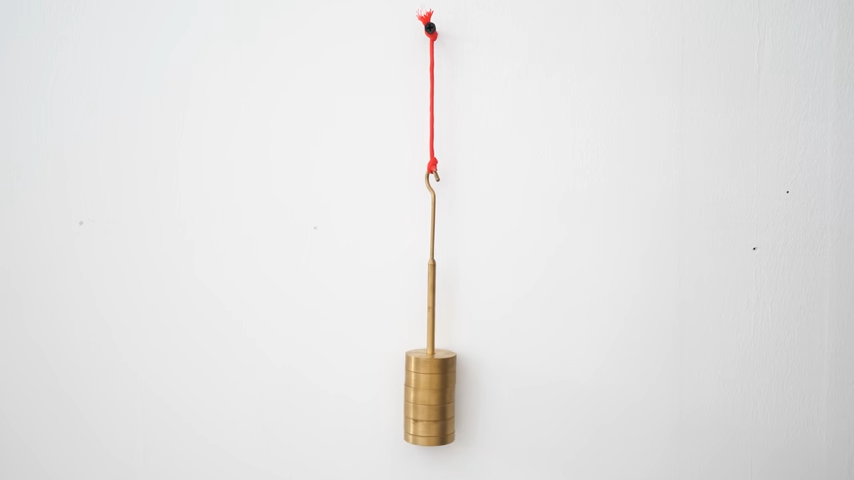
But what if you slowly let go of the blue rope instead of cutting it? The weight starts going down, right? Yes, until the red and green ropes become taut and start sharing the weight. Once that happens, they start stretching, and the weight goes up again! This gradual change highlights the transition from a “one long spring” scenario to two separate ones.
From Springs to Traffic Jams: The Braess Paradox Explained
This spring setup might seem like child’s play, but it holds a surprising connection to real-world traffic! Imagine two towns connected by wide, uncongested highways and narrow, congested roads. There’s also a shortcut – a shortcut like our blue rope. Now, closing the shortcut might seem counterintuitive, but hear me out.
This scenario reflects Braess’s Paradox, where removing a road can actually improve traffic flow! Here’s why: with the shortcut open, everyone takes it, leading to congestion on the narrow roads. Closing the shortcut forces drivers to use the highways, spreading out the traffic and reducing overall travel time.
The Self-Driving Utopia: A Glimpse into the Future?
The video concludes with a thought-provoking question: could self-driving cars, acting as a single “hive mind,” solve traffic woes? Imagine all cars communicating and cooperating to optimize traffic flow. While alluring, such scenarios raise ethical concerns about who controls the decision-making and its potential implications.
More Than Just Science: Curiosity, Fun, and Everyday Connections
This exploration is more than just dry scientific facts. It’s about the joy of curiosity, the thrill of unraveling the unexpected, and the power of relatable examples. It reminds us that science isn’t just about complex equations; it’s about understanding the world around us, even the seemingly bizarre things like a weight defying gravity.
So, the next time you encounter something puzzling, don’t be afraid to ask questions, experiment, and embrace the counterintuitive. After all, who knows what fascinating discoveries await just around the corner?



